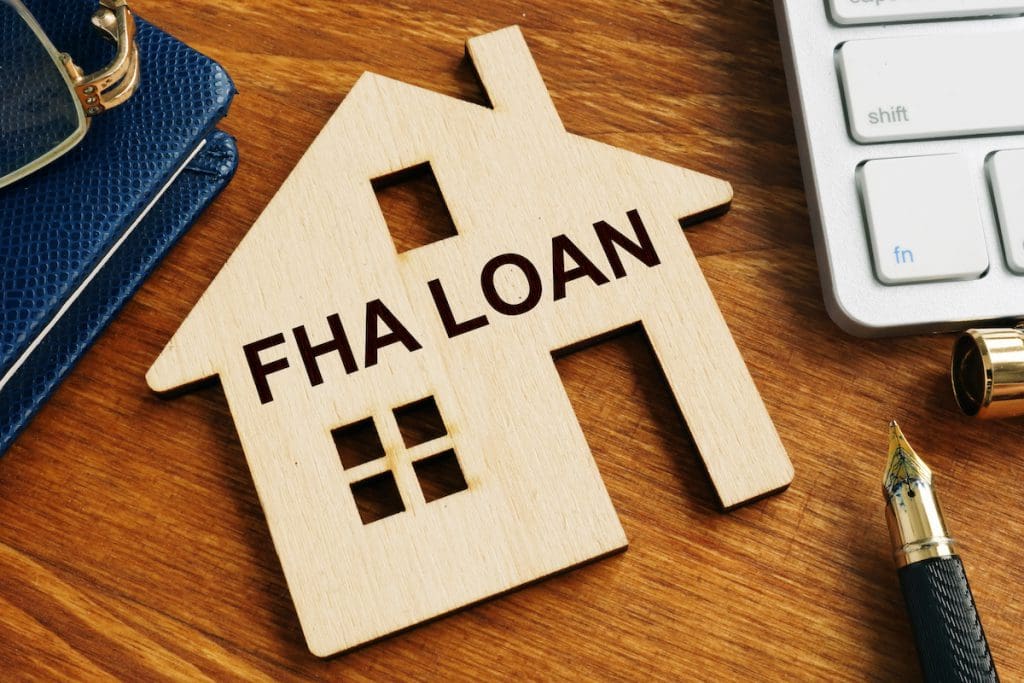What Is an FHA Loans 2023 (Federal Housing Administration)?
A home mortgage that is insured by the government and provided by a bank or other lender that has been approved by the Federal Housing Administration (FHA) is known as an FHA loan.
FHA loans allow applicants with lower credit scores than is typically required and have lower minimum down payments than many conventional loans.
The FHA loan is intended to assist families with low to moderate incomes in becoming homeowners. They are especially well-liked by first-time homebuyers.

How Do FHA Loans 2023 Operate?
As of 2022, you can borrow up to 96.5% of a home’s value with an FHA loan if your credit score is at least 580. Therefore, only a 3.5% down payment is necessary.
If you can put down 10% of the purchase price, you can still get an FHA loan even if your credit score is between 500 and 579.
Role of the Bank in an FHA Loan (FHA Loans 2023)
No one actually receives a mortgage loan from the FHA. A bank or other financial institution that the FHA has approved issues the loan
The loan is supported by the FHA. Since the bank isn’t taking on the default risk, getting bank approval is made easier as a result. For this reason, some individuals refer to it as an FHA-insured loan.
Mortgage insurance must be purchased by borrowers in order to be approved for an FHA loan, with the FHA receiving the premium payments.
A Brief History of FHA 2023 Loans
During the Great Depression in 1934, Congress established the FHA. The housing market was in trouble at the time due to rising default and foreclosure rates, the widespread requirement of 50% down payments, and the impossibility for regular wage earners to meet the mortgage terms. As a result, the majority of people in the U.S. were renters, with only one in ten households owning their own home.
The FHA was established by the government to lower the risk to lenders and make it simpler for borrowers to be approved for mortgages.
69.2% was an all-time high for the homeownership rate in the United States in 2004, according to research from the Federal Reserve Bank of St. Louis. the first three months of 2022, the rate stood at 65.4%
Different FHA Loans 2023 (types of FHA Loans 2023)
The FHA provides a number of alternative home loan options in addition to conventional mortgages.
Mortgage for Home Equity Conversion (HECM) (FHA Loans 2023)
Reverse mortgages enable seniors (age 62 and older) to convert the equity in their homes into cash while keeping the title to the property. The homeowner has the option of taking money out in a line of credit, a fixed monthly amount, or a combination of both.
Loan under Section 203(k) of the FHA (FHA Loans 2023)
The cost of some renovations and repairs is accounted for in the loan’s borrowing capacity. It’s excellent for those prepared to purchase a home that needs work and invest some sweat equity
FHA Mortgage for Energy Efficiency (FHA Loans 2023)
This programme is comparable to the FHA 203(k) Improvement Loan Program, but it focuses on improvements that reduce utility costs, like new insulation or solar or wind energy systems.
Section 245(a) Loan
Borrowers who anticipate an increase in their income can benefit from this programme. Beginning with lower monthly payments, the Graduated Payment Mortgage (GPM) gradually raises them over time. The monthly principal payments for the Growing Equity Mortgage (GEM) have been increased on the calendar. Both promise loans with shorter terms.
| The 5 FHA Loan Types | |
| Standard Mortgage | a loan used to pay for a primary residence. |
| Mortgage for Home Equity Conversion | a reverse mortgage that converts home equity into cash for homeowners aged 62 and over. |
| Program for 203(k) Mortgages | a mortgage that includes additional funds to pay for home improvements, renovations, and repairs. |
| Mortgage Energy Efficiency Program | a mortgage with additional funds included for making energy-efficient home improvements. |
| Chapter 245(a) Loan | A mortgage with graduated payments (GPM) starts out with a small monthly payment and gradually increases it. In order to reduce the loan term, a Growing Equity Mortgage (GEM) has planned increases in monthly principal payments. |
| The 5 FHA Loan Types | WHAT IS AN FHA LOAN TYPE? |
What Conditions Apply to FHA Loans 2023? (FHA Loans 2023)
Your lender will assess your eligibility for an FHA loan as it would for any borrower, starting with a verification of your legal age, Social Security number, and place of residence in the United States (according to your state laws).
In some ways, FHA loan requirements are more flexible than bank loan requirements. There are some stricter requirements, though.
When you apply for a mortgage, your financial history will be reviewed regardless of whether the loan is FHA-guaranteed.
Down payments and credit ratings
Individuals with credit scores as low as 500 3—which falls into the “very bad” range for a FICO score—can be approved for FHA loans.
If you can afford a 10% down payment and have a credit score between 500 and 579, you might be able to obtain an FHA loan. In the meantime, you can obtain an FHA loan with as little as 3.5% down if your credit score is 580 or higher.Comparatively, to be eligible for a conventional mortgage, applicants typically need to have a credit scor
of at least 620. Depending on how eager they are to lend money at the time, banks may require a down payment as low as 3% or as high as 20%. Time to apply
Evidence of Regular Employment
The FHA-approved lender will want proof that the applicant can repay the mortgage because this is a requirement for mortgages. Evidence of recent and consistent employment is crucial for figuring out whether the borrower can keep their end of the bargain.
Tax returns, a year-to-date balance sheet, and a profit-and-loss statement can all serve as proof of this.
If you had a strong work and income history in the same or a closely related occupation for the two years prior to becoming self-employed, you might still be eligible if you had been self-employed for less than two years but for more than one year.
adequate income
Less than 31% of your gross income should go toward your mortgage, HOA dues, property taxes, mortgage insurance, and homeowners insurance.
This is known as the front-end ratio by banks.
Your back-end ratio, which includes your monthly mortgage payment and all other consumer debt payments, should be less than 43% of your gross income.
FHA Loan Limits
Each year’s first is when the FHA loan limits are updated. The national minimum and maximum loan amounts for residential properties with up to four units are listed below.
Prior to examining these, it’s critical to understand how FHA mortgage limits operate. Your personal loan limit can never be less than 65% of the 2022 1-unit national conforming loan limit ($420,680). However, since loan limits are entirely determined at the county level, they will frequently be higher. The national maximum for properties with one unit, which is $970,800, applies to Alaska and Hawaii.
| 2022 FHA Loan Limits | ||
| Number of Units | Loan Limit Floor | Ceiling in Alaska, Hawaii and High-Cost Areas |
| 1 | $420,680 | $970,800 |
| 2 | $538,650 | $1,053,000 |
| 3 | $651,050 | $1,502,475 |
| 4 | $809,150 | $1,867,275 |
The Department of Housing and Urban Development has a mortgage limits search engine if you’re trying to find the limits in your area. Although ostensibly for FHA mortgage limits, you can choose “Fannie/Freddie” under limit type once the FHFA formally announces conforming loan limits. Make sure to also choose “CY2023” for the limit year in order to see the limits for the following year.
The Bottom Line Because loan limits have generally increased across the nation, more people should be able to purchase homes without having to deal with the more stringent requirements for jumbo loans. This significantly
Types of shares-Difference between ordinary shares and preference shares

